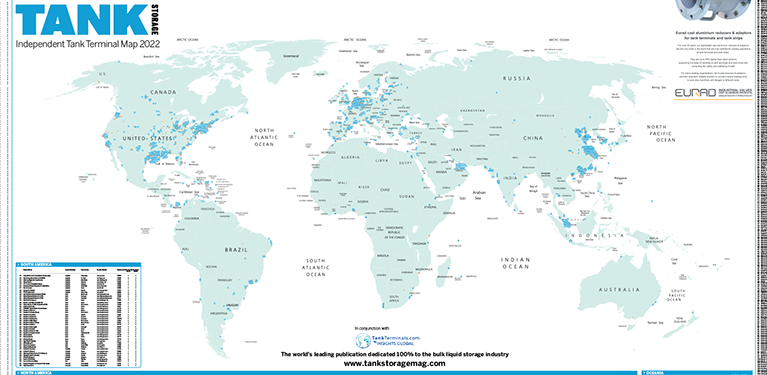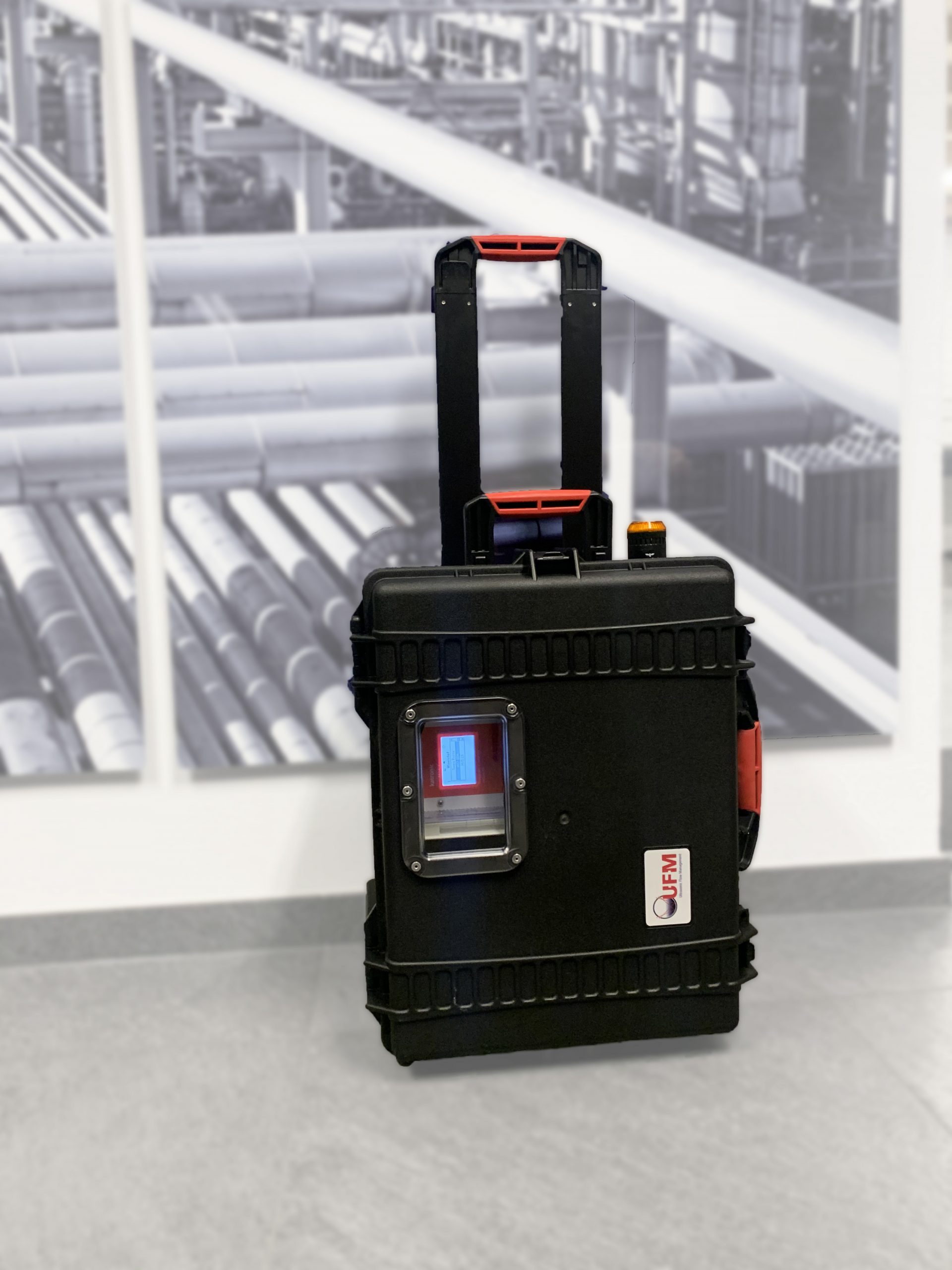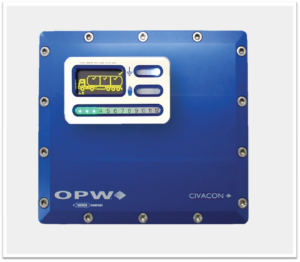Find out the benefits of Katronic’s non-invasive, clamp-on flow measurement devices
A large tank storage facility has many hundreds of metres of pipework for loading, unloading and transfer. Challenged with flow measurement within a pipe, particularly an existing pipe, what issues does the site engineer face? Key, obviously, is identifying a technology that will work. Any interruption to production and difficulties in re-establishing the conditions required to re-commence operations must also be considered.
Invasive flow measurement instruments can be sites of contamination and even provide sites for microbial and algal growth to flourish. Non-invasive, clamp on flow measurement using ultrasonic techniques provides a well-proven method to measure reliably and repeatably without interrupting the process and without compromising the cleanliness of the pipe. There are also other interesting applications for non-invasive ultrasonic equipment that are nothing to do with flow measurement, but everything to do with supporting safe operations.
HOW DOES NON-INVASIVE CLAMP-ON MEASUREMENT WORK?
Regardless of whether the flowmeter is fixed to a wall or is a portable, battery-powered unit, flow is sensed by a pair of compact stainless steel transducers, which are fixed to the outside of the pipe by clamps or chains. These transducers pass an ultrasonic signal through the pipe walls and the liquid, with the ultrasonic pulses travelling both with and against the direction of flow. Each transducer sends and receives the ultrasonic ‘echoes’ that return through the liquid, which are then analysed within the flowmeter. Advanced signal processing compares the signal in each direction and calculates the flow velocity, the resulting measurement being displayed on the integral screen and transmitted via either analogue or digital signals.
An easy way to think of the way ‘transit time’ measurement works is to imagine a rowing boat on a river. If the boat is rowed a known distance downstream and then back upstream, the time required differs. The difference between the upstream and downstream time varies in proportion to the speed of the river flow. In the same way the ultrasonic pulses are both emitted and detected by the pair of transducers a known distance apart, so reflections from the inside of the pipe are affected by the flow rate and so are measured both ‘upstream’ and ‘downstream’.
The difference between upstream and downstream transit times can be a matter of nanoseconds, so the flow meter system considers a number of reflections, or ‘passes’ to increase the confidence in the measurement. The flowmeter analyses the reflected ultrasonic pulses, taking into consideration the effect the pipe material has on the flow, together with compensation for the velocity profile of the liquid medium.
INSTALLATION
The installation is very straightforward although, as with any instrument, there are certain guidelines that lead to an optimum result. The key is to have as smooth a flow as possible within the pipe at the point at which the measurement is made, and there are guidelines for things like; distance from a pipe bend, or from a flange or pipe connection, all of which can disturb the flow. A good, modern clamp-on flowmeter will also have built-in tools that help to optimise the installation, maximising the signal strength and giving dynamic feedback to make sure that the transducers are accurately positioned on the pipe.
In a Katronic KATflow flowmeter, the quick setup wizard handles virtually every application, while the Audible Positioning Assistant gives direct, immediate visual and audible feedback to make sure sensor positioning is perfect. KATflow flowmeters are all built on the same platform to the same standard, so once an operator has learnt to configure one flowmeter they can configure any model in the range. That also means that a quick test performed with a hand-held portable flowmeter guarantees the performance of a full installation of a fixed unit.
The flowmeter makes a direct measurement of flow velocity which is then converted, based on the set up of the unit, into any other flow parameter required within the process, typically litres per second. Measurable flow rates range from 0.01 metres per second (m/s) all the way up to 25 m/s.
TYPICAL APPLICATIONS
Broadly speaking, a non-invasive flow meter can be used in any application where a pipeline is filled with flowing liquid. The first question should always be ‘what are we trying to achieve?’ A clamp-on flowmeter offers a typical accuracy of 2% of flow velocity with repeatability of around 0.15%, although higher accuracy can be achieved if there is an opportunity to calibrate against the specific process. There may be critical measurements that need a different approach and the process owner will have to accept the inconvenience and cost of an invasive approach such as a Coriolis meter. For the majority of applications within a process environment, however, a couple of percent accuracy is adequate.
The go-to technology for flow metering has, for many years, been the electromagnetic flowmeter (magflow). These are well-proven and effective, but to retrofit a unit means breaking into the pipework, interrupting the process for a number of hours, and then re-establishing plant integrity afterwards. A magflow meter also depends on the electrical conductivity of the liquid to work.
CASE STUDY –
HYDROCARBON BUNKERING
Katronic’s partners in Benelux, U-F-M/Ultrasonic Flow Management, used 13 Katronic KATflow 170 ATEX clamp-on flowmeters to help to make sure that off-loading of a variety of petrochemicals into a ‘hydrocarbon hotel’ was done as quickly, efficiently but above all, safely as possible. It is clearly critically important that a tanker is unloaded as quickly as possible, but that needs to be done
within the limits of safe operation. As the rate of offload increases, so does the static electric charge in the line, increasing risks of sparks. The flow velocity has to be maintained at just below 3.5 m/s to maintain flow rate without risk of sparking, and the KATflow 170 use compact clamp-on transducers to measure the flow, signalling that velocity to the site control system which then modulates the pumped volume.
Clamp-on flowmeters are versatile; pipe diameters up to as much as 6 m, any acoustically conductive pipe material including plastics, process temperatures up to 250˚C and so on.
Katronic clamp-on flowmeters are available in both fixed and portable forms, portable versions providing opportunities for temporary process monitoring, for example to verify pump performance, allowing service and maintenance to become predictive. To take a specific instance, there may be a regular maintenance schedule for a series of pumps. Some of those pumps will have run for many hours, others for far less, and the wear on the pumps may have been affected by the process conditions when they were on duty. With a simple clamp-on measurement, actual pump performance compared to expected throughput can be determined directly, so maintenance priorities can be decided on the basis of actual repair and service requirements rather than time.
CASE STUDY – SYSTEM SAFETY FOR SITE MAINTENANCE
In another application for U-F-M, Katronic flowmeters have been built into a mobile housing and are being used to confirm safe working by contractors at the largest Dutch refinery. When working on live pipelines, possibly to weld new sockets for invasive instrumentation or other attachments to the pipe, the process is not shut down and much of the cooling for the welding operation is provided by the liquid flow itself. Therefore, in what is almost a reverse of the requirement of the case study mentioned above, the key here is to maintain flow above a critical velocity. The refinery operators were dependent on safe working practises of their contractors and wanted to maintain control and provide their contractors with support for working safely. U-F-M created a solution based on a KATflow 150 fixed flowmeter to give an audible and visual warning if flow velocity falls below a critical value, which they call a UFM70. The KATflow 150 flowmeter is mounted into a wheeled case with a battery power pack. The clamp-on transducers sense the flow velocity, and the case also includes a large siren and a warning light mounted to the outside of the case. Instant warning to the contractors if they need to stop work, self-contained and transportable wherever it is needed in the refinery.
Clamp-on, non-invasive ultrasonic flowmeters are clean, easy to install and use, and versatile. The rise of the distributed factory made possible by Industry 4.0 and Industrial Internet of Things (IIoT) technologies is very relevant to tank storage operation. The increased demands of efficient storage throughput and effective interface with downstream processes and logistics also means that process measurement that can be easily incorporated into an existing process is becoming more and more essential. The clamp-on flowmeter is set to be an important part of that growth.
For more information:
www.katronic.com















